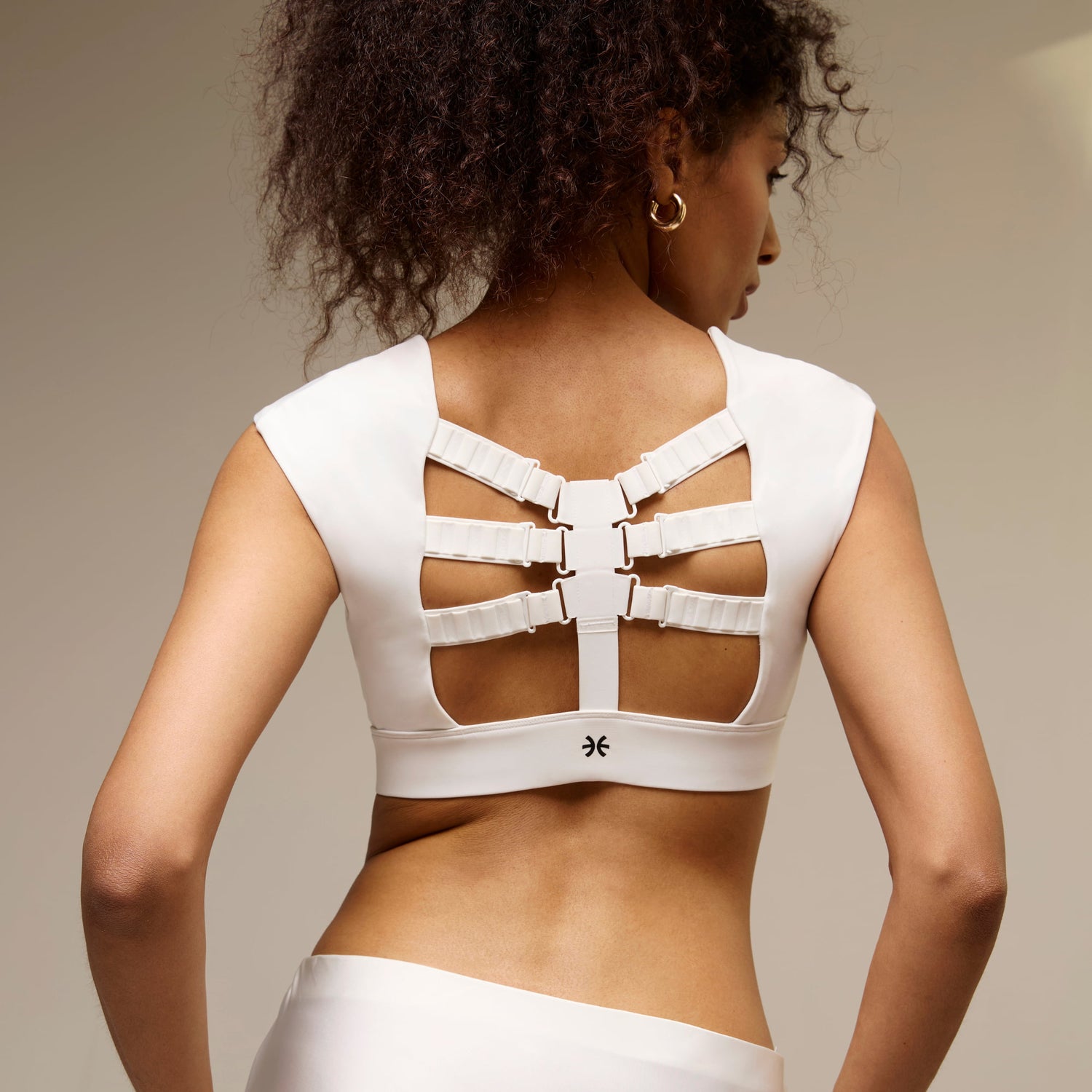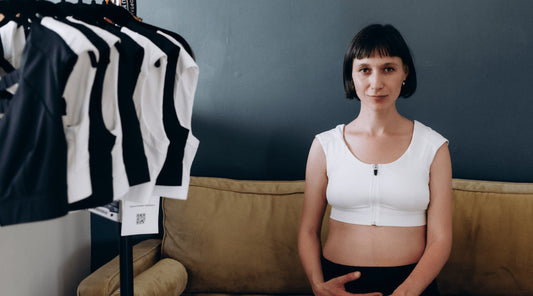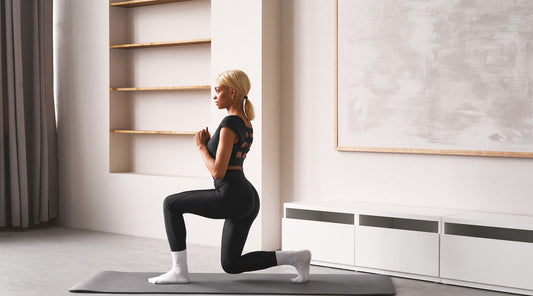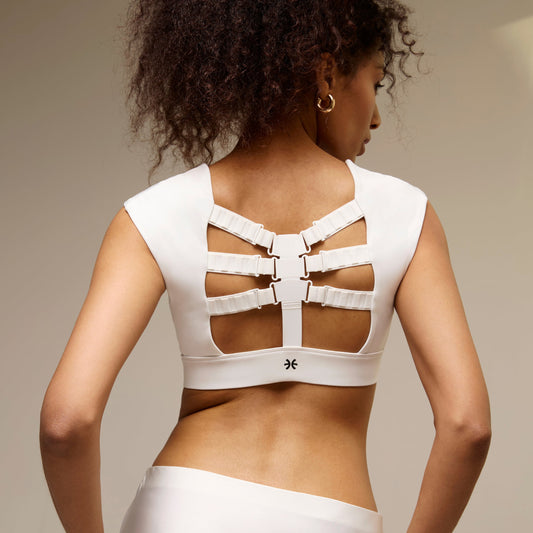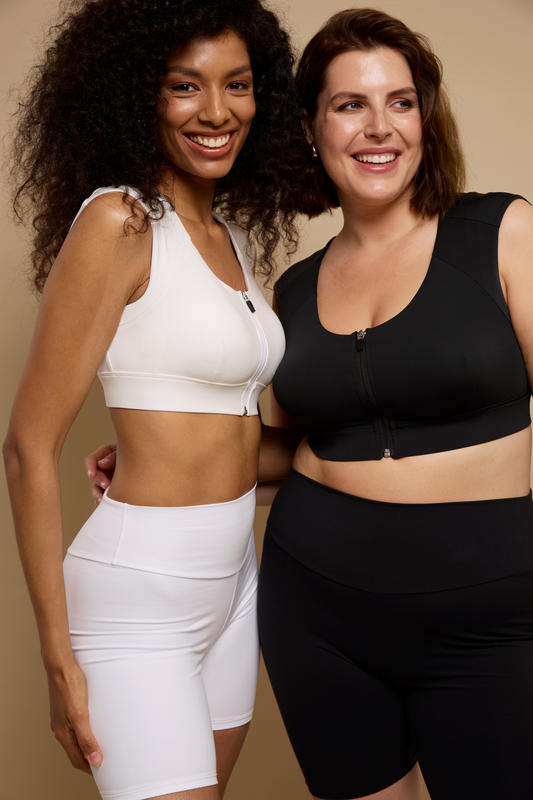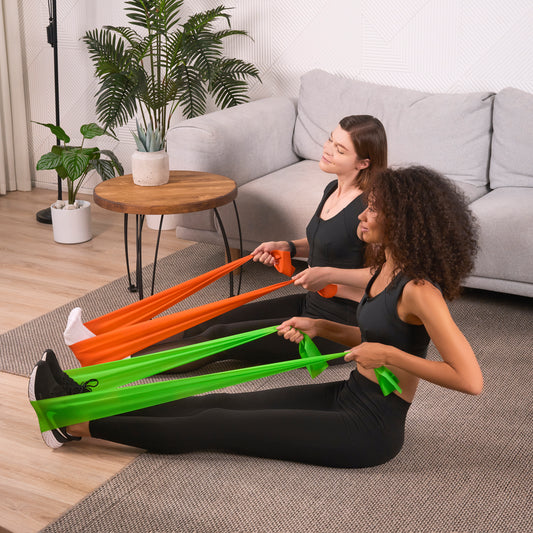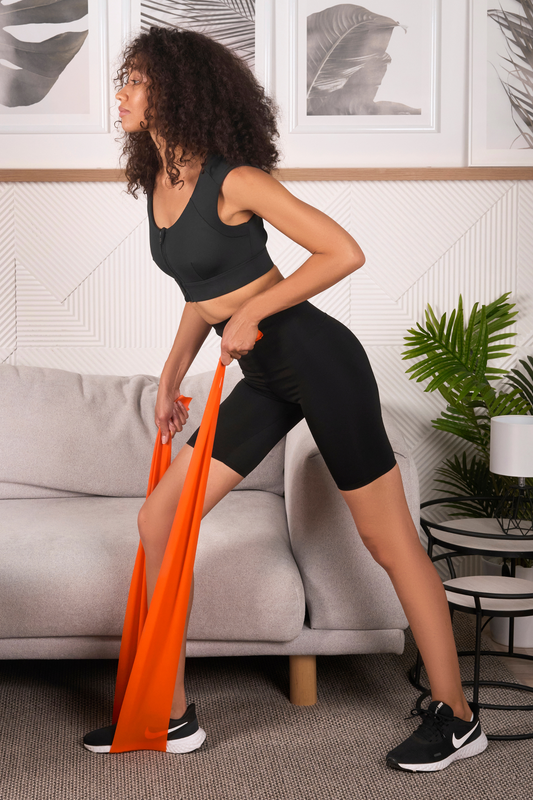Dedicating just 15 minutes a day to these exercises - combined with wearing the Etalon posture correcting bra - can significantly improve your posture, strengthen your core, and enhance your overall back health.
Note: if you have severe back pain or injury, are severely out of shape, or have serious medical problems, talk to your doctor before you start any exercise program. Some exercises may not be recommended.
Why do you need posture exercises?
Good posture has a lot of benefits besides just looking good. It ensures balance on all levels of inner body function: digestion, strength, flexibility, muscle, and mind relaxation. According to research from 2008, proper posture reduces the stress on your ligaments, muscles, and joints. The ability to walk or sit straight is similar to all other skills, it requires constant training and support. This is great news for those who think that if you don’t have a good posture now, it’s impossible to achieve. The key to success is defined by mind-body awareness, that practices such as yoga or pilates help to improve. Etalon’s founder Kristina Rudzinskaya is a STOTT certified Pilates instructor. Below she shares her top 9 exercises for good posture below.
- Child’s pose
- Forward fold
- Cat cow
- Goalpost Squeeze
- High plank
- Side plank
- Pigeon pose
- Cobra Pose: Back Extension
- Chest opener
Exercise 1. Child’s Pose

This classic pose stretches and lengthens your spine, glutes, and hamstrings. It’s an excellent exercise to help posture, releasing tension tension in your lower back and neck. You can do a child’s pose any time you need to rest from other activities.
To do Child’s pose:
- Sit on your shinbones with your knees together, your big toes touching, and your heels splayed out to the side.
- Lean forward from your hips and slowly stretch arms out in front of you.
- Sink your hips back down toward your feet. If your thighs won’t go all the way down, place a pillow or folded blanket under them for support.
- Gently place your forehead on the floor or turn your head to one side.
- Keep your arms extended or rest them along your body.
- Breathe deeply into the back of your rib cage and waist.
- Relax in this pose for up to 5 minutes while continuing to breathe deeply.
Exercise 2. Forward Fold

This standing stretch releases tension in your spine, hamstrings, and glutes. It also stretches your hips and legs. While doing this stretch, you should feel the entire back side of your body opening up and lengthening. It’s one of the simplest posture correction exercises you can do daily.
To do Forward fold:
- Stand with your big toes touching and your heels slightly apart.
- Bring your hands to your hips and fold forward at your hips.
- Release your hands toward the floor or place them on a block. Don’t worry if your hands don’t touch the ground — just go as far as you can.
- Bend your knees slightly, soften your hips joints, and allow your spine to lengthen.
- Tuck your chin into your chest and allow your head to fall heavy to the floor.
- Remain in this pose for up to 1 minute.
Exercise 3. Cat Cow
Practicing cat cow stretches and massages your spine. As a dynamic workout for better posture, it helps to relieve tension in your torso, shoulders, and neck while promoting blood circulation.
To do Cat cow:
- Start on hands and knees, balancing your weight evenly on all four limbs.
- Inhale as you look up, dropping abs toward the floor and extending your spine.
- Exhale as you arch your back toward the ceiling and tuck chin into chest.
- Continue these motions for at least 1 minute.
Exercise 4. Goalpost Squeeze

This pose helps to relax shoulders and release tension between the shoulder blades and upper back. If you have mild back pain, core-strengthening exercises may improve posture, ease symptoms, and prevent future pain. Incorporate this into your routine as an exercise for better posture to improve alignment.
To do Goalpost squeeze:
- While sitting upright, lift your arms up into a goalpost position with your elbows bent at a 90 degree angle even with your shoulders.
- Pull your abdominal muscles in and up toward your spine as you exercise.
- Relax your shoulders down, and then pull the elbows towards the back of the room. Imagine that you’re squeezing a marble in between your shoulder blades as you work the upper back.
- Release. Repeat 10 times.
- Work with slow, controlled movements, breathing evenly, without holding your breath.
Exercise 5. High Plank

The high plank pose helps to relieve pain and stiffness throughout your body while strengthening your shoulders, glutes, and hamstrings. It also helps you develop balance and strength in your core and back, both important for good posture. It's a powerful exercise to improve poor posture and enhance stability.
To High plank:
- Come onto all fours and straighten your legs, lift your heels, and raise your hips.
- Straighten your back and engage your abdominal, arm, and leg muscles.
- Lengthen the back of your neck, soften your throat, and look down at the floor.
- Make sure to keep your chest open and your shoulders back.
- Hold this position for up to 1 minute at a time.
Exercise 6. Side Plank

A side plank is good for checking the neutral alignment of your spine and legs. This energizing pose works the muscles in your sides and glutes. Strengthening and aligning these muscles helps to support your back and improve posture. It’s one of the best exercises for better posture and core strength.
To do Side plank:
- From a high plank position, bring your left hand slightly in to center.
- Shift your weight onto your left hand, stack your ankles, and lift your hips.
- Place your right hand on your hip or extend it up toward the ceiling.
- You can drop your left knee down to the floor for extra support.
- Engage your abdominals, side body, and glutes as you maintain this pose.
- Align your body in a straight line from the crown of your head to your heels.
- Look straight ahead of you or up toward your hand.
- Hold this pose for up to 30 seconds.
- Repeat on the opposite side.
Exercise 7. Pigeon Pose

This exercise is a great hip opener that also loosens up your spine, hamstrings, and glutes. The pigeon pose can also help to stretch your sciatic nerve and quadriceps. Opening and stretching these places in your body makes it easier to correct imbalances in your posture. Incorporate pigeon pose into your posture correction exercises routine to enhance flexibility.
To do Pigeon Pose:
- Come down on all fours with your knees below your hips and your hands a little bit in front of your shoulders.
- Bend your right knee and place it behind your right wrist with your right foot angled out to the left. If it’s difficult you can use a cushion to help hips be aligned.
- Rest the outside of your right shin on the floor.
- Slide your left leg back, straighten your knee, and rest your thigh on the floor.
- Make sure your left leg extends straight back (and not to the side).
- Slowly lower your torso down to rest on your inner right thigh with your arms extended in front of you.
- Hold this position for up to 1 minute.
- Slowly release the position by walking your hands back toward your hips and lifting your torso.
- Repeat on the left side.
Exercise 8. Cobra Pose: Back Extension

This move strengthens the erector spinae (the back muscles that extend your spine and prevent slouching) and other low back muscles. It’s a must for any workout for better posture to promote spinal alignment.
To do Cobra Pose:
- Lie on your stomach with palms flat on the floor near your ribs. Extend your legs straight behind you, and press the tops of your feet into the floor.
- Exhale strongly and pull your abdominal muscles in and up toward your spine.
- Lengthen out through your spine and slowly raise your head and chest off the floor, using only your back muscles. Do not push down into your arms to press up. Keep your hip bones on the floor, and gaze down at the floor to relax your neck muscles.
- Slowly lower back down.
- Repeat three to five times, adding more as your lower back gets stronger.
- If you want to increase the intensity, transform cobra into Sphinx: Reach your arms long beside your head. Keep your elbows straight.
Exercise 9. Chest Opener

This exercise allows you to open and stretch your chest. This is especially useful if you spend most of your day sitting, which tends to make your chest move inward. As an exercise for good posture, it also helps you stand taller and breathe easier.
To do Chest opener:
- Stand with your feet about hip-width apart.
- Bring your arms behind you and interlace your fingers with your palms pressing together. Grasp a towel if your hands don’t reach each other.
- Keep your head, neck, and spine in one line as you gaze straight ahead.
- Inhale as you lift your chest toward the ceiling and bring your hands toward the floor.
- Breathe deeply as you hold this pose for 5 breaths.
- Release and relax for a few breaths.
- Repeat at least 10 times.
FAQs
Should I workout if I have bad posture?
Can you correct years of bad posture?
What exercise is best for correcting posture?
How many days can you fix bad posture?
How does a posture corrector work to improve posture?
Can a posture corrector work for long-term posture correction?
Does a posture corrector work for relieving back pain and tension?
How quickly can a posture corrector work to show results?
Trending
Try Etalon posture improvement products
